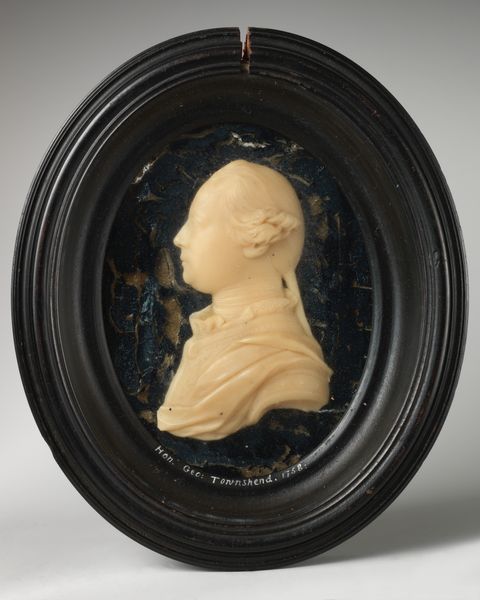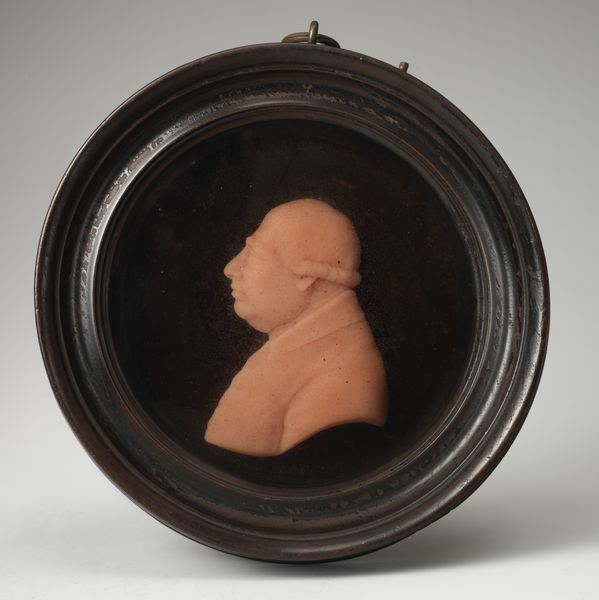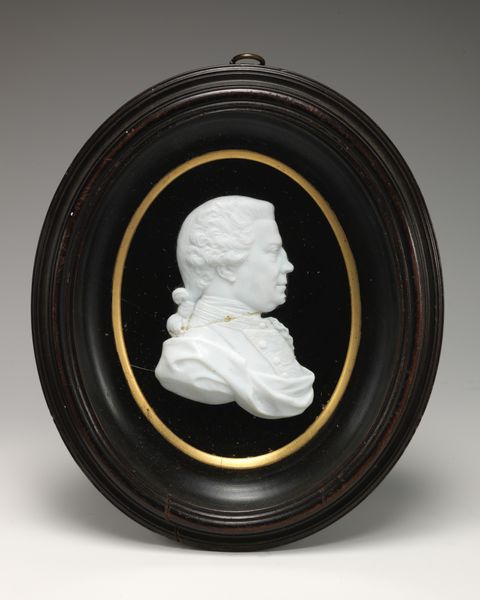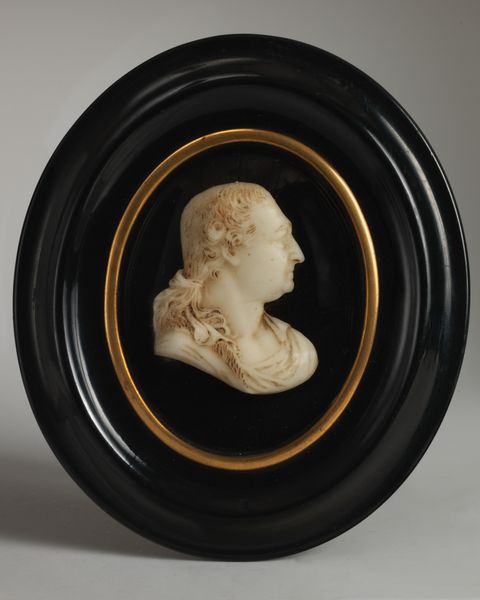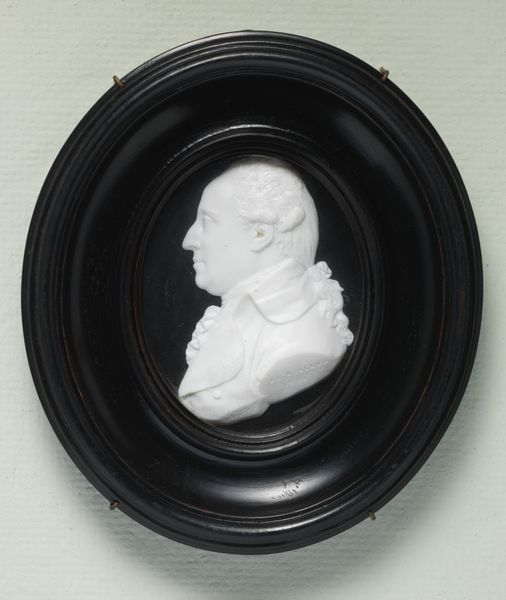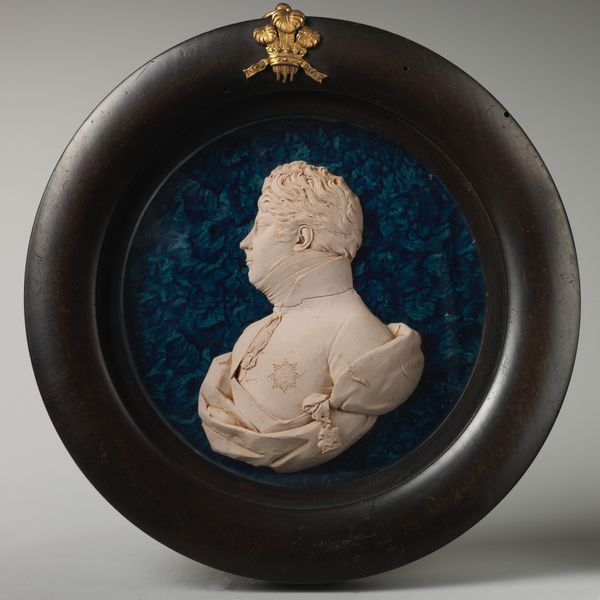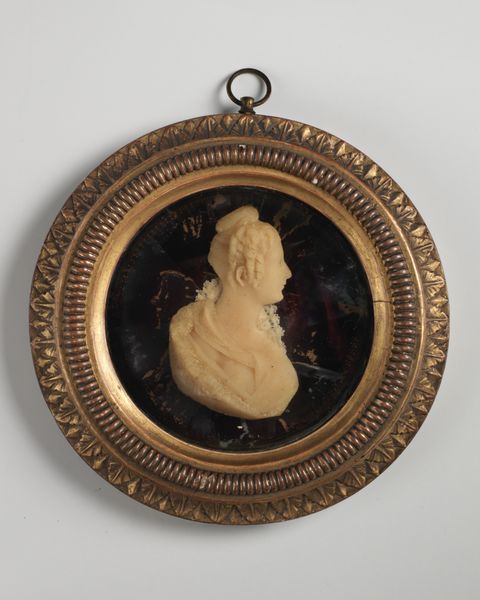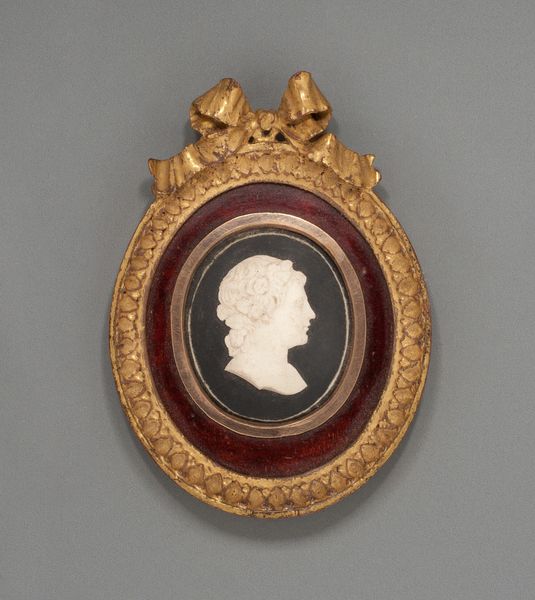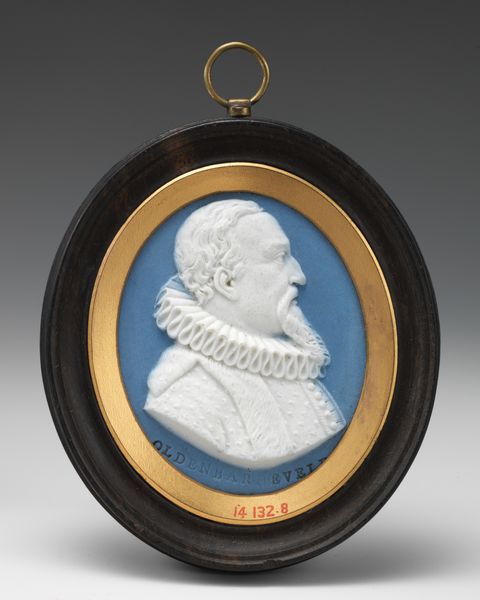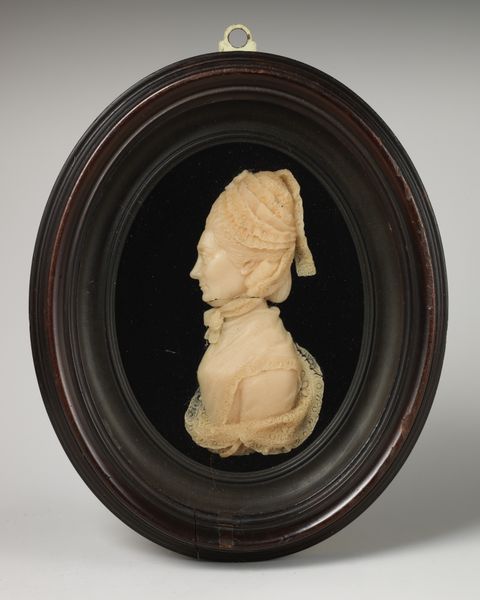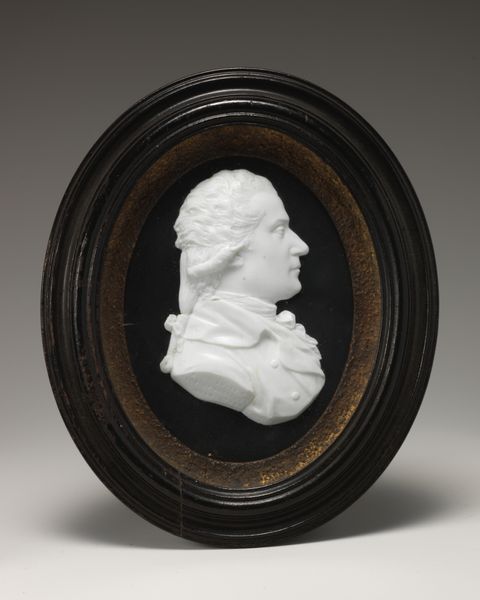
Dimensions: Framed: 7 1/8 × 6 in. (18.1 × 15.2 cm)
Copyright: Public Domain
Curator: Here we have an 18th-century miniature, "Member of the Willoughby de Broke Family" by Isaac Gosset, carved from ivory. Editor: My initial impression is one of reserved elegance. The smooth, pale ivory against the deep red velvet evokes a sense of quiet luxury and restraint. Curator: Restraint is a good word. Portrait miniatures like these served specific social and political purposes. Commissioned by affluent families, they became visual statements of lineage, status, and networks of power. Think about the Willoughby de Broke family. Editor: Exactly! They represented more than just individual likeness; they broadcasted belonging and privilege. The scale also mattered. Easily portable, such portraits moved through social circles. Who got to own it, show it, keep it on their person - it's all indicative of that family's relations, influence, and reach. Curator: And consider the very material—ivory—a luxury commodity obtained through exploitative colonial trade routes. Its gleaming surface might have distracted viewers from these brutal origins. The artistry becomes almost complicit, smoothing over harsh truths for the sake of appearances. Editor: Absolutely. The Neoclassical style, so evident here, favored idealized representations, and that extended beyond mere physical features. It was about presenting a cultivated self, reinforcing class distinctions. Do you see how her simple hair style projects effortless elegance? Curator: I do. It's intriguing how Gosset employs a profile view here too. While direct frontal portraits engage more immediately, a profile creates a certain distance, a cultivated remoteness suitable for someone of high standing. Editor: Indeed, the work presents its subject almost as a classical cameo, suggesting enduring strength of character while omitting more informal or expressive aspects. What do you take away when you think about such art from a modern lens? Curator: Well, recognizing these layers makes me rethink decorative arts. Not merely pretty objects, these were deeply enmeshed with social stratification and economic disparities. This piece asks critical questions of the history of the class she represents, and whose suffering afforded this artwork. Editor: Yes, analyzing how artworks like these once reinforced dominant ideologies encourages a more nuanced reading of the past—one where we hold beauty accountable to its broader context.
Comments
No comments
Be the first to comment and join the conversation on the ultimate creative platform.

